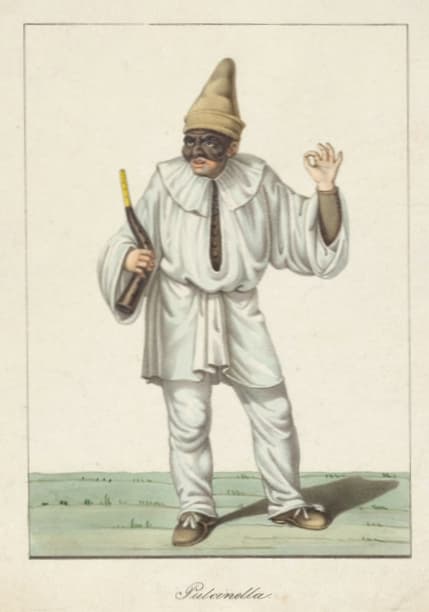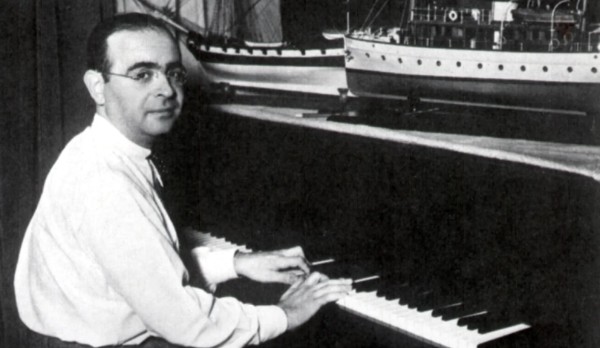At age 19, Sergei Rachmaninoff (1873–1943) wrote his Op. 3, Morceaux de Fantaisie, including as its second movement, the Prelude in C sharp minor that would haunt him for years. Even considering the fame of the Prelude, all of the parts of the Op. 3 have been described as ‘miniature masterpieces’. Rachmaninoff had just graduated from the Moscow Conservatory and was about to start his public career as a composer/pianist. Looking within this piece that requires a virtuoso touch, we can see so much of the music that was to pour out of his creative pen.

Sergei Rachmaninoff, 1892
The first movement Élégie requires that the pianist rein in the temptation to over-exaggerate the emotion of the piece lest it becomes sentimental or maudlin.
Sergei Rachmaninoff: Morceaux de fantaisie, Op. 3 – No. 1. Élégie in E-Flat Minor (Boris Bloch, piano)
The Prelude, the most famous movement from this 1893 work of Rachmaninoff’s, opens with the same kind of dramatic statement as Tchaikovsky’s Piano Concerto No. 1. Some performers see the opening as redolent of the bells of Russia – a ‘calm and suggestive force’ – that is followed by a powerful section that ends in a cascade of chords requiring a virtuoso hand.
Sergei Rachmaninoff: Morceaux de fantaisie, Op. 3 – No. 2. Prelude in C-Sharp Minor (Boris Bloch, piano)
Rachmaninoff’s style of musical writing that resulted in beautiful melodies comes to the fore in the third movement. Rachmaninoff revised this movement in 1940 and in this performance, the pianist plays the 1893 edition but adds the 1940 recapitulation to the end. In many ways, the Mélodie is emblematic of the private salons that were so prevalent in fin du siècle Russia and France – private home entertainment at the highest level.
Sergei Rachmaninoff: Morceaux de fantaisie, Op. 3 – No. 3. Mélodie in E Major (Boris Bloch, piano)
Polichinelle or Pulchinella is, of course, the famous commedia dell’arte character – everyone sees him as a clown but inside, he’s always fighting himself (middle section) where his internal sadness comes out. The ‘melancholic pall’ that overlays the clown comes through clearly.

Pulcinella
Sergei Rachmaninoff: Morceaux de fantaisie, Op. 3 – No. 4. Polichinelle in F-Sharp Minor (Boris Bloch, piano)
The overwhelmingly minor sound of the Morceaux comes out most strongly in the final movement, the Sérénade. There’s grace, there are dance-like lines (with parallels to a dance sequence in the opera Aleko from one year earlier), and there’s also beauty and passion. The 1940 version is played here, as the performer finds it to be ‘more elaborate and spicy’.
Sergei Rachmaninoff: Morceaux de fantaisie, Op. 3 – No. 5. Sérénade in B-Flat Minor (Boris Bloch, piano)
The work as a whole combines two elements that many associate with Rachmaninoff’s style as a composer: drama and a feeling of melancholy. In looking at one of his earliest works with the perspective of time, we can see how both drama and sadness would imbue his music and become his characteristic style.
For more of the best in classical music, sign up to our E-Newsletter



Such a magnificent composer! The 2nd movement of the 2nd Symphony is stunningly beautiful….that extended clarinet solo is just off the charts gorgeous. I love all his piano concertos too as well as Rhapsidy on a Theme of Paganini and the lovely Vocalise. I could go on and on.
If you’re not familiar with rachmaninoff’s final composition, the Symphonic Dances, you should be. Another masterpiece! The bizarre Waltz that is the second movement continues to fascinate me.
I agree, Doug. I love the sax solo near the beginning.
The blog starts with: “The first movement Élégie requires that the pianist rein in the temptation to over-exaggerate the emotion of the piece lest it becomes sentimental or maudlin.”
But this is the slowest version that I have ever heard, indeed, bordering on the maudlin.